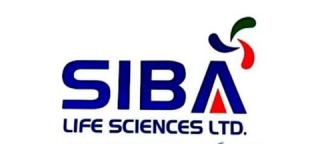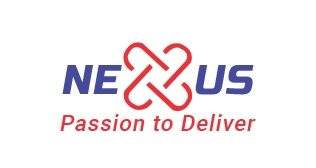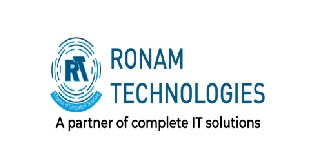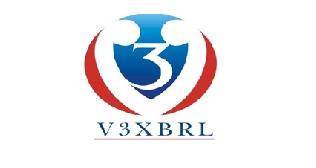ESOP Compliance: A Guide to Navigate Key Issues for Businesses
Employee Stock Option Plans (ESOPs) are a powerful magnet for top talent in India’s startup ecosystem. For those wondering what is ESOP, it’s a long-term incentive that gives employees ownership in the company’s growth. However, despite their strategic value, many startups struggle with following the proper ESOP compliance checklist in India, leading to legal and financial risks.
From missing board approvals to improper filings with the Registrar of Companies (ROC), non-compliance is more common than most founders realize. And the consequences—ranging from void allotments and penalties to investor scrutiny—can derail otherwise promising ventures. If you’re looking for a deeper understanding or resources like an ESOP scheme for private companies, it’s essential to start with the basics, including what is ESOP in share market and how it impacts both ownership and legal obligations.
This blog explains the ESOP compliance lifecycle, common pitfalls, and a solution-based approach. ESOP full form is Employee Stock Option Plan. Simply put, ESOP means giving employees rights to buy company shares. ESOP Direct is a platform that helps manage ESOPs and ensures compliance.
🔍 Why ESOPs Are Strategic Yet Legally Fragile
In India’s dynamic startup space, ESOPs are often used to:
Retain key talent in high-growth phases
Delay cash-based compensation
Offer wealth-building opportunities aligned with valuation growth
Reward performance in lieu of higher salaries
However, what’s often overlooked is that ESOPs are not just a policy document—they are a legal instrument. If not structured and executed according to Indian laws, the equity issued may be considered void or illegal, leading to:
Regulatory penalties
Denied tax benefits for employees
Down-round renegotiations or red flags during due diligence
Friction with investors and the board
🧾 Legal Framework Governing ESOPs in India
Understanding the legal foundation is the first step toward compliance. Key regulations include:
1. Companies Act, 2013
Section 62(1)(b): Governs issuance of shares to employees under an ESOP
Requires special resolution by shareholders through an Extraordinary General Meeting (EGM)
Mandates filings with ROC (Forms MGT-14 and PAS-3)
2. SEBI (SBEBSE) Regulations, 2021
Applicable to listed companies
Details disclosures, pricing, lock-in, and vesting norms
3. Income Tax Rules
Rule 12(1): Defines taxation for ESOPs under perquisite rules
Delays or errors can strip employees of tax advantages
4. FEMA Regulations
Apply if options are granted to employees who are non-residents or foreign nationals
✅ The ESOP Compliance Lifecycle – Step by Step
Here’s a breakdown of the legally compliant ESOP issuance process for private limited or unlisted public companies in India:
1: Drafting the ESOP Scheme
Should align with Companies Act requirements
Must clearly define eligibility, vesting schedule, exercise price, lock-in, and exit rights
2: Board Approval
Pass a Board Resolution approving the ESOP scheme
Schedule an EGM for shareholder approval
3: Shareholder Resolution
Obtain a special resolution in the EGM under Section 62(1)(b)
Required for implementation and future grants
4: ROC Filing (MGT-14)
File the special resolution with ROC within 30 days using Form MGT-14
Missing this step attracts late fees and legal exposure
5: Option Grant Letters
Post-approval, issue formal grant letters to eligible employees
Include terms, number of options, vesting details, and exercise period
6: Option Vesting and Exercise
Vesting must follow the minimum 1-year cliff rule under Indian law
Upon exercise, allot equity and issue share certificates
7: ROC Filing for Allotment (PAS-3)
File Form PAS-3 within 15 days of share allotment
Attach board resolution, list of allottees, and valuation certificates if applicable
🚨 Common Mistakes That Derail Compliance
Despite best intentions, many startups make the following errors:
Skipping shareholder approval or assuming board consent is enough
Delaying ROC filings, especially PAS-3 after share allotment
Using generic ESOP templates that don’t reflect company specifics
Over-allocating the ESOP pool without adjusting the cap table
Failing to update the ROC after each exercise and allotment
Overlooking FEMA implications when offering ESOPs to foreign employees
💡 How Non-Compliance Affects Fundraising and M&A
Investors expect full compliance hygiene, especially on equity instruments like ESOPs. During due diligence, discrepancies in:
Grant letters
Filings
Cap table entries
Exercise records
can result in:
Renegotiated terms
Delayed closings
Holdbacks or indemnities
Even deal cancellations in severe cases
Startups that fail to structure ESOPs correctly may be forced to retrospectively regularize grants—an expensive and risky process.
🛠 A Solution-Centric Framework for ESOP Compliance in India
✔ Step 1: Build a Custom ESOP Policy
Avoid cookie-cutter templates. Draft a policy that reflects your stage, employee structure, funding plans, and exit strategy.
✔ Step 2: Align Legal, HR, and Finance Teams
Ensure all departments understand their role—from drafting and disclosures to reporting and recordkeeping.
✔ Step 3: Maintain an ESOP Tracker
Track grants, vesting schedules, expiries, and exercises in a centralized register. This simplifies ROC filings and audits.
✔ Step 4: Engage a Valuation Expert
For every exercise/allotment, a fair market valuation is essential. Get a certified valuation from a registered valuer.
✔ Step 5: Implement a Compliance Calendar
List all filing deadlines (MGT-14, PAS-3, etc.) and set up internal reminders or automated alerts.
✔ Step 6: Consider Cap Table Management Tools
Platforms like Qapita, Trica, or Carta (India-compatible) can help automate ESOP workflows and avoid manual errors.
🧭 Conclusion: Marrying Vision with Legal Precision
ESOPs aren’t just a line item on your pitch deck—they’re a promise to your team. When executed with legal clarity, they can motivate, reward, and retain your top performers while keeping your startup investor-ready.
But when compliance falls through the cracks, that promise can quickly become a liability.





















